 The subject of this article is a Foreign Service Helmet that I acquired 10 or so years ago from an antique mall in Canada. The seller did not represent it as anything in particular. It was just an old military helmet and plume with no provenance. Since that time it has been the focus of much frustration, as I have tried to nail down exactly what it is. I must thank my new friend Stuart Bates, for his “dog with a bone” attitude in helping me finally identify it, with certainty! Also thanks to Clive M. Law, Benny Bough, and my old friend Douglas N. Anderson, for their assistance and contribution in this effort.
The subject of this article is a Foreign Service Helmet that I acquired 10 or so years ago from an antique mall in Canada. The seller did not represent it as anything in particular. It was just an old military helmet and plume with no provenance. Since that time it has been the focus of much frustration, as I have tried to nail down exactly what it is. I must thank my new friend Stuart Bates, for his “dog with a bone” attitude in helping me finally identify it, with certainty! Also thanks to Clive M. Law, Benny Bough, and my old friend Douglas N. Anderson, for their assistance and contribution in this effort.
Much of the frustration links to the fact that the 1900 Dress Regulations, as well as Kipling & King, identify the plate as Governors/Inspectors of Military Prisons, which is not incorrect. The problem is that in the decade from 1891 to 1900 the same plate appears to have been used for all General Staff and Departmental Officers. The plate is clearly described in the 1891 Dress Regulations, including dimensions, but there is no illustration, so it leaves the matter somewhat vague. In this case, the plume, which accompanied the helmet, white over red, could only indicate one thing – General Staff. If the helmet were Provost or Military Prisons, then we had to assume that the plume and helmet had been mated together after the fact. (Provost wore a black/white plume). I had no indication that the plume was a later addition. In fact the boxes for the plume and helmet essentially match. But I also had no hard evidence to support the theory that the plate was the same across departments. The address used on the Hobson & Sons label, 37 & 38 Little Windmill St. points to the time of manufacture as being circa 1884-86, when Hobson & Sons used that address on their label. Finally, late one night, Stuart located “the missing link.” It was an illustration from a William Jones & Co. British Uniform Pattern Book from 1886 showing the helmet as Staff! This provided confirmation that the plate used on the Staff helmet was the same! Finally, period evidence found!
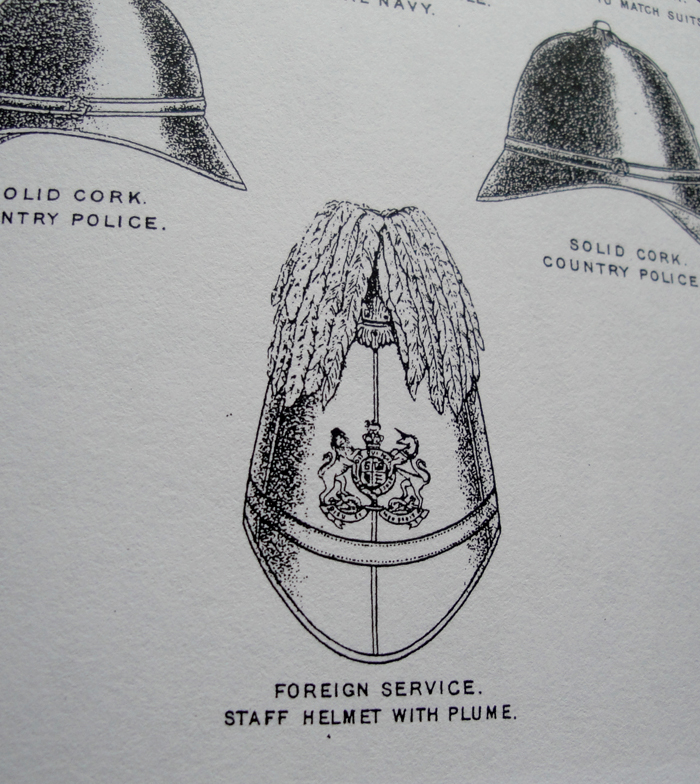
1886 Wm. Jones & Co. British Uniform Pattern Book showing the helmet and plate. (Courtesy Stuart Bates)
I cleaned the helmet, plate, and re-backed the chin scales with kidskin. The boxes appear to be the original shipping boxes. I was surprised that a helmet of this superior quality did not come in a tin.
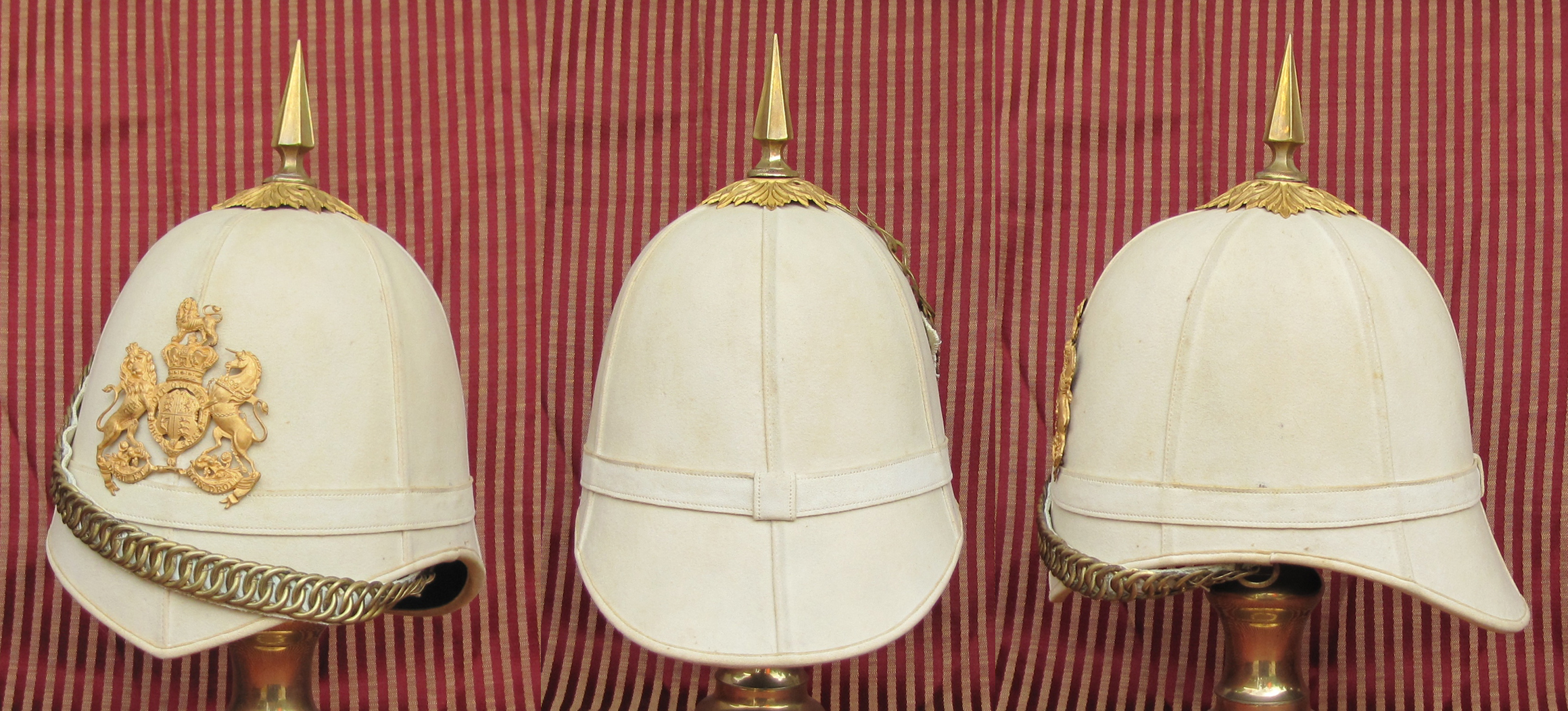
Victorian British General Staff Foreign Service Helmet with spike in place. This helmet is a very high quality helmet covered in Doeskin.
It is not however, of the sealed pattern, but rather closer to the “Smart” looking helmet foot-noted in the 1900 Dress Regulations (p74). This pattern did not provide as much sun protection as the sealed pattern. The 1900 DRs say that the sealed pattern should be strictly adhered to, so it would stand to reason that in the years preceding, it must have been fairly common for officer’s to purchase helmets that did not match the sealed pattern. (See Stuart Bates’ article on the Smart Helmet).
Note the address of Hobson & Sons on the label, which can be a strong indicator of the date of manufacture, although not foolproof as it is possible these companies continued to use their stock of labels until they were used up. Hobson & Sons used this address from 1884-86.
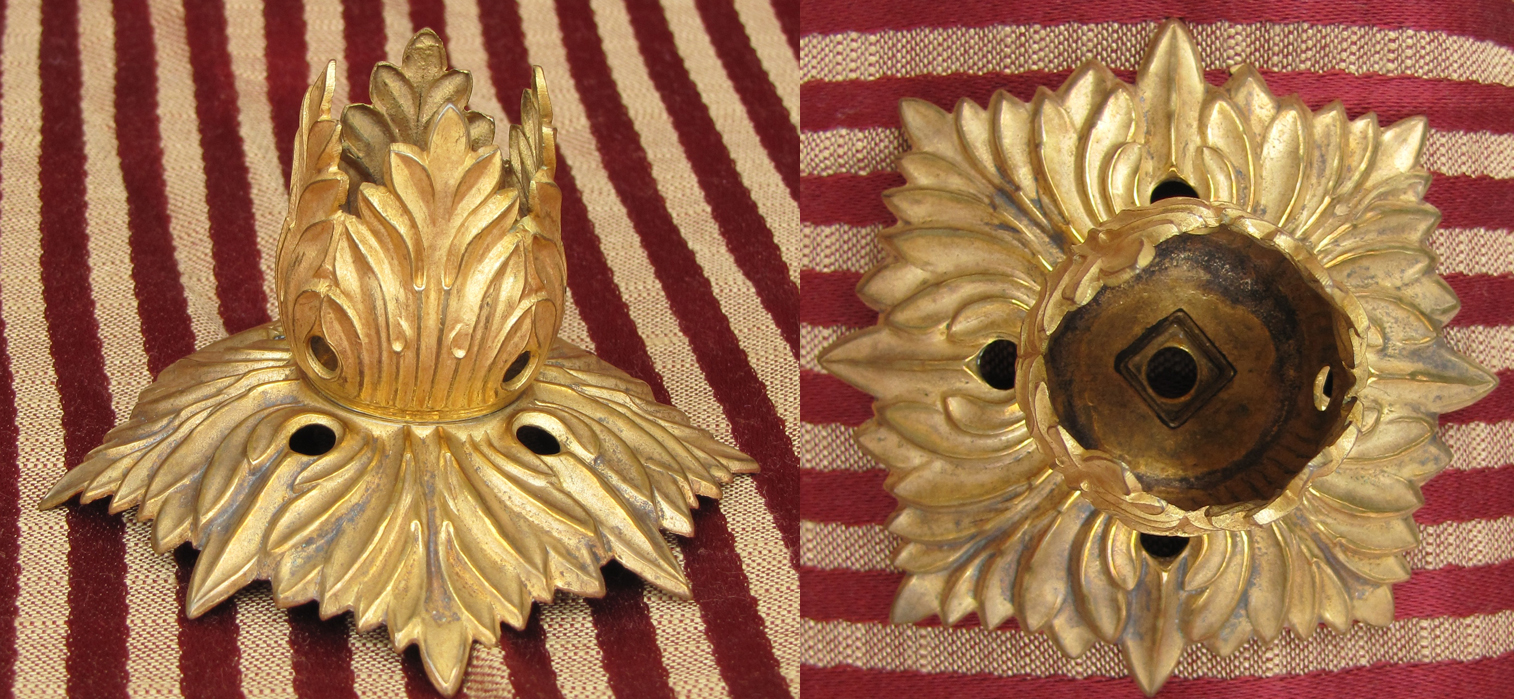
Details of the Acanthus Leaf base for the plume. Notice the square hole that holds the base of the plume in place.
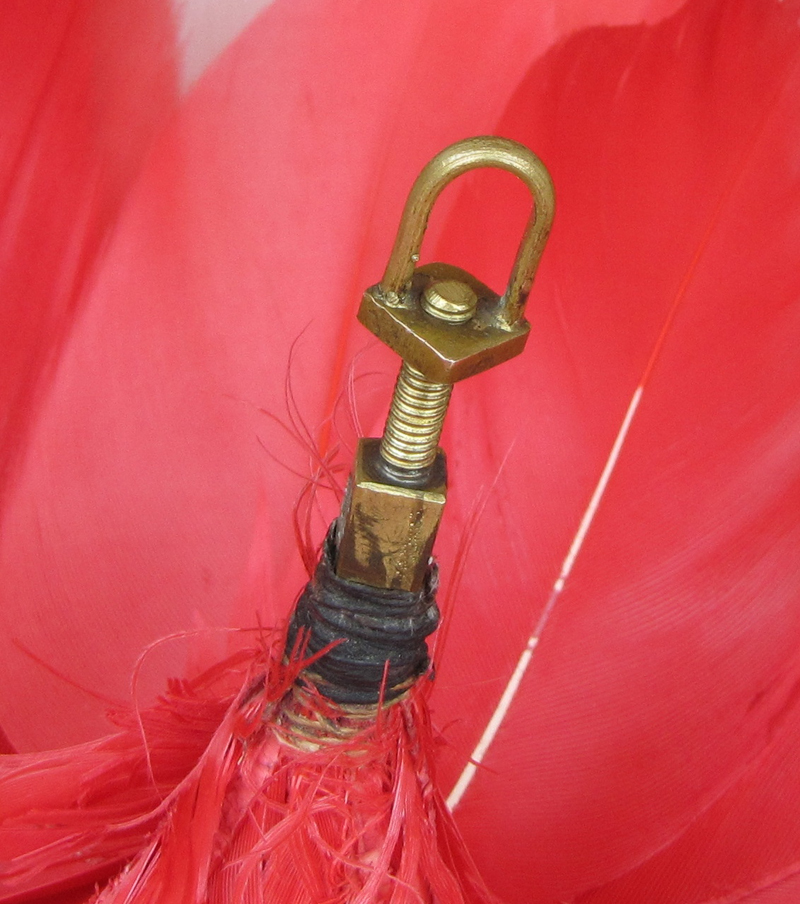
Base of plume with nut. This would pass through the Acanthus Leaf base, then through the helmet vent hole and the nut secures everything in place.
The original owner cut a hole in the top of the plume container so the plume could be secured from the top. The plume has a sewn in metal ring as was common for all types of British feather plumes of the period. This enabled the plume to be suspended in the container and it allowed for it to be hung up for drying, if it became wet or was cleaned.
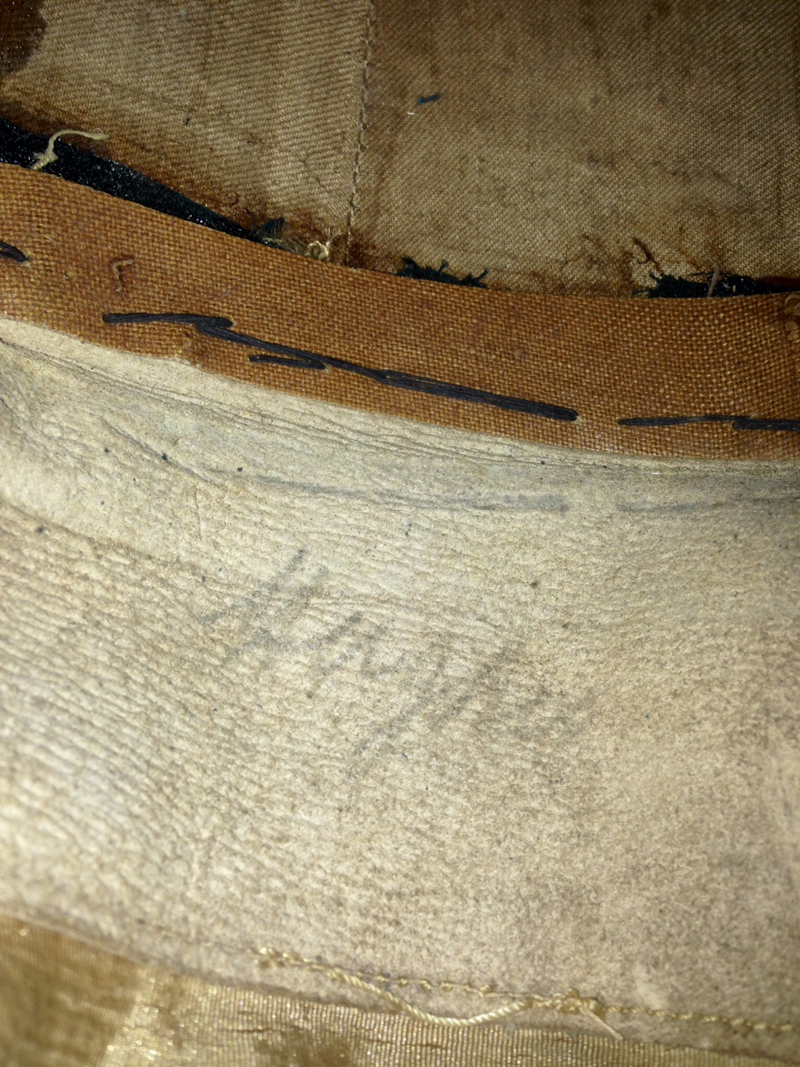
There appears to be a name inside the leather band but it is difficult to make out. It looks like Hughes, but that is a very common name, which makes it difficult to research, especially as it lacks any initials.
This piece took many years and the help of many knowledgeable collectors to identify. This is what makes the hobby so interesting and fun. Thanks to all who have helped me over the years and especially to Stuart Bates in this most recent quest!
Jon Maguire

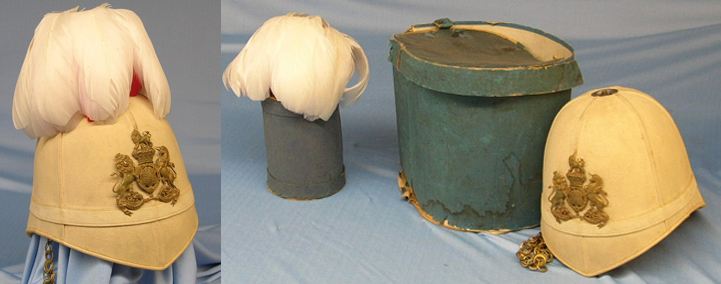

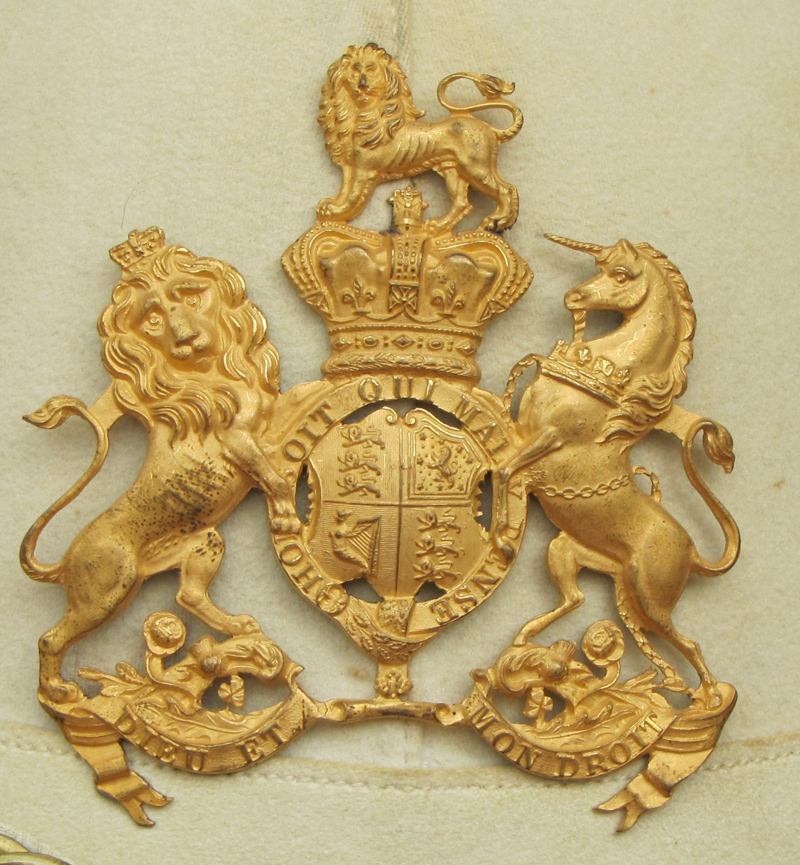

Congratulations on the mystery solved. Without great web sites such as this one specimens like yours would remain as “unknowns”.
Well done to all the experts who were able to assist Jon.
Regards
Brian
Does anyone know where you might be able to buy the type of old Royal Coat of Arms badge which sits on a British General Staff Officer’s Foreign Service Helmet? Like the detailed Victorian Royal Arms plate with 90% fire gilt finish seen above? Thanks.
You can see an example of this type in use by a Queensland staff officer here: http://onesearch.slq.qld.gov.au/primo_library/libweb/action/dlDisplay.do?vid=SLQ&docId=slq_digitool187159
Thank you Tim! Outstanding! I have been trying to locate an image of this helmet in use for many years!
It would be helpful to know wht you used to clen the helmet without damaging it.
I don’t make recommendations for cleaning a helmet without seeing it first. In this case, the helmet is covered in wool Melton or Doeskin, which is unusual for a sun helmet. I used K2R and a soft bristle tooth brush with multiple applications. If you tried that on a cotton covered helmet it may work, but if the fabric is breaking down, it might tear. You must proceed with caution on any cleaning project and realize there is a risk involved. I have one helmet I should never have touched…but that’s another story. Each helmet is unique. If you want to learn different products, buy some trashed helmets and experiment before tackling a collector quality example. Good luck.
I have the same plate with two variations on the one illustrated here. A post 1902 crown AND four screw fittings to the reverse. The latter suggests a sabretache plate. Any comments would be most welcome.